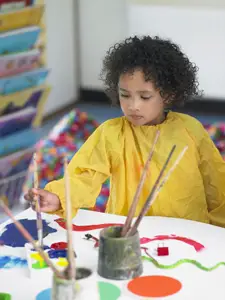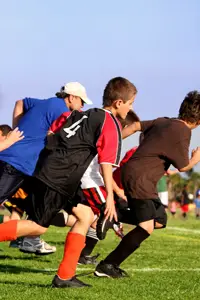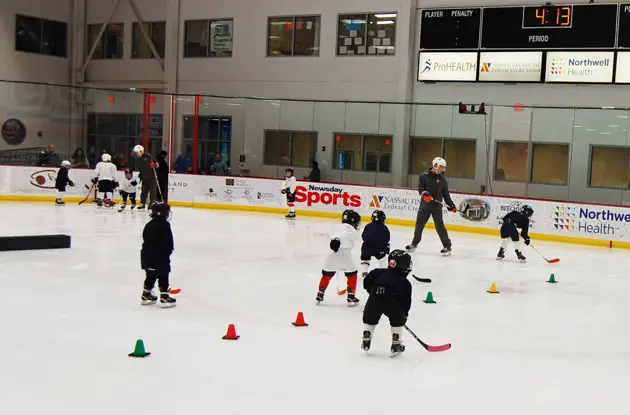
Now’s the time to sign up for (and fill your calendar with!) all of your kids’ scheduled after-school activities. But first, keep reading for our spot-on advice for dealing with the top five challenges you’ll likely encounter.
1. Overbooking: How to know how many activities is too many.
There’s been much ado made lately about over-scheduled, over-stressed kids, but it is mostly unfounded in the opinion of Beth Miller, author of the Nellie Mae Education Foundation report “Critical Hours: Afterschool Programs and Educational Success.”
Generally kids need to explore and develop their own interests, so taking on a variety of activities is important, according to Miller. Every child is different, but all children need to develop those skills that we don’t often think of as academic but that “are actually core to success in the 21st century.”
Okay, still-what’s a rough estimate? Michele Borba, parenting expert and author of The Big Book of Parenting Solutions, offers this rule of thumb: No matter how many activities you are planning for your kids, do one less. Thinking of soccer, gymnastics and music? Cut one! “That’s what the wise, savvy moms I know do,” she says. “Ask yourself if this is your dream or your kid’s,” she suggests. If you are a watchful observer of their behavior, you’ll see what is truly important to them-then slash one activity that’s not.

2. Multiple siblings? How to manage those schedules.
Tonia Tomlin, who owns an organizing business called Sorted Out and is currently working on the show Hoarders (painfully close to home for many of us) puts her organizing skills to work for you ambitious moms. Her doable advice: First get a calendar-a big calendar if you’ve got many kids-that is only for the kids’ activities. She’s a fan of the magnetic, oversized dry erase boards. Next, assign each kid a color. Every Sunday night, update the board together so that everyone is on the same page. A bonus step is getting the kids to update their own activities. (For little kids, a magnetic board is another good option: You can print out or handwrite cards with each activity in advance that your littlest ones can move around each week as needed.)
3. There is a way for your painfully shy child to thrive in a group.
If you think your child may have a passion for something-music or swimming, say-but he’s not thriving in his class environment, plain old shyness may be to blame. Is he quiet in a group setting at first? Awkward performing new tasks in front of others? Chances are he’ll do better in a one-on-one lesson first. But that doesn’t mean he shouldn’t join in the group fun. “Stack the deck in his favor,” says Borba, and pick an activity to start that will help him build confidence. That way he will have the security to be more social in the next activity he chooses. Also, don’t be afraid to get the teacher involved-that one simple thing can make all the difference in the world. Alert a new group leader that your child can be tentative. And after a few weeks, approach again to ask how things are going in class and let him or her know that a little boost of confidence might be needed.
 4. How to get bang for your buck.
4. How to get bang for your buck.
“I was on a panel with Olympians,” says Borba, “and they all said the same thing: We didn’t buy our kids expensive equipment or hire private coaches, but we went and did the activity together as a family.” There’s a lot to be said to checking things out together before you leap into a new activity. If you can rent a yoga tape at the library before buying a pack of yoga classes, great. Try going to the park and just watching people play tennis before you shell out cash for the equipment. If your kid loses interest in 3 minutes flat, it’s likely not the best investment.
Also, don’t be afraid to trade or even freeload for gear your child needs for an already-beloved activity: Look into Freecycle.com or on your local Craigslist site. And check out community boards to see all the fun stuff happening in your neighborhood, most of it basically free. Sometimes, half the fun is the hunt itself.
5. And if my kid wants to quit…?
Once you pick an activity together, stick with it for the period of time you set out. This requires you to be very clear about the commitment up front. “You have to set up the parameters ahead of time,” says Borba. “Put it in some framework.”
Studies have shown that it is not just the activity that is important to the child; the adult in charge also makes an enormous difference. So be watchful of the relationship the coach or instructor has with your child, and be understanding if the two simply don’t mesh, but don’t blame the activity. You do well to teach the kids a little stick-with-it-ness by encouraging them to hold out until the end.





















